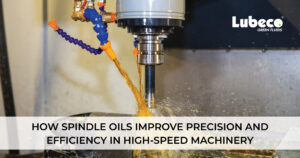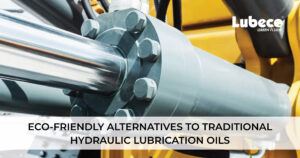Introduction
The bright bar drawing process is a critical step in the manufacturing of precision metal components. It involves pulling a metal bar through a series of dies to reduce its diameter, improve its surface finish, and enhance its mechanical properties. However, this process can be subject to various challenges, including friction, heat generation, and material deformation. One effective solution to mitigate these issues and improve production efficiency is the use of drawing oil. In this blog post, we will explore the effect of drawing oil on production efficiency in the bright bar drawing process.
Reducing Friction and Heat Generation
Friction and heat generation are inherent challenges in the metal forming process. When a metal bar is drawn through a die, the surface contact between the bar and the die generates heat due to the intense pressure and sliding motion. Excessive heat can lead to premature tool wear, poor surface finish, and even structural changes in the metal. Drawing oil plays a vital role in reducing friction and heat generation by acting as a lubricant between the metal bar and the die. It forms a thin film on the surfaces, minimizing direct contact and reducing the coefficient of friction. As a result, the heat generated during the drawing process is significantly reduced, leading to improved tool life and enhanced surface finish.
Preventing Material Deformation and Breakage
Material deformation and breakage are common challenges encountered during the bright bar drawing process. As the metal bar is subjected to intense pressure and bending forces, it can undergo plastic deformation or even fracture. Drawing oil acts as a coolant and a protective barrier, preventing excessive deformation and breakage. By reducing friction and heat, the oil helps maintain the metal’s temperature within an acceptable range, preventing softening or hardening of the material. The lubricating properties of the oil also aid in controlling the flow of the metal, ensuring uniform deformation and reducing the likelihood of defects or cracks.
Improving Surface Finish and Dimensional Accuracy
In the bright bar drawing process, achieving a high-quality surface finish and dimensional accuracy is of paramount importance. Drawing oil plays a significant role in enhancing these aspects. The lubricating film created by the oil acts as a buffer, minimizing metal-to-metal contact and reducing the occurrence of surface imperfections such as scratches or scoring. The smoother surface finish achieved with the aid of drawing oil not only improves the aesthetic appeal of the final product but also facilitates subsequent machining or surface treatment processes. Furthermore, the reduced friction and controlled metal flow enabled by the oil contribute to better dimensional accuracy, ensuring that the final product meets the required specifications.
Enhancing Tool Life and Efficiency
Drawing oil not only benefits the quality of the produced parts but also extends the life of the drawing tools. By reducing friction and heat generation, the oil helps minimize tool wear and prolongs the tool’s lifespan. This leads to reduced downtime for tool maintenance, lower replacement costs, and increased overall efficiency. Additionally, the improved lubrication provided by the oil reduces the force required to pull the metal bar through the dies, resulting in energy savings and improved productivity.
Conclusion
Drawing oil plays a crucial role in enhancing production efficiency in the bright bar drawing process. By reducing friction, heat generation, material deformation, and breakage, drawing oil improves tool life, surface finish, dimensional accuracy, and overall efficiency. Its lubricating properties and cooling effect contribute to smoother metal flow, reducing defects and ensuring high-quality end products. Manufacturers should carefully select the appropriate drawing oil based on the specific metal being processed and consider factors such as viscosity, additives, and compatibility with the manufacturing environment. Incorporating drawing oil as a part of the production process can yield significant benefits, enabling manufacturers to achieve consistent, high-quality results and stay competitive in the industry.








